The Alibaba Cloud 2021 Double 11 Cloud Services Sale is live now! For a limited time only you can turbocharge your cloud journey with core Alibaba Cloud products available from just $1, while you can win up to $1,111 in cash plus $1,111 in Alibaba Cloud credits in the Number Guessing Contest.
As a key project of the Cloud Native Computing Foundation (CNCF), Kubernetes has been developing rapidly in the last two years backed by the powerful communities of Google and Redhat. Besides becoming a leader in the container orchestration field, Kubernetes is now developing towards the standard PaaS configuration.
Logs are an indispensable part of a system. Official documents of Kubernetes introduce multiple log collections modes, which can be summarized into the native mode, DaemonSet mode, and SideCar mode.
kubectl logs command to directly view the local logs or use the log driver of Docker Engine to redirect logs to files, syslog, or Fluentd.
Each collection mode has its advantages and disadvantages. The following table provides a simple comparison among these collection modes:
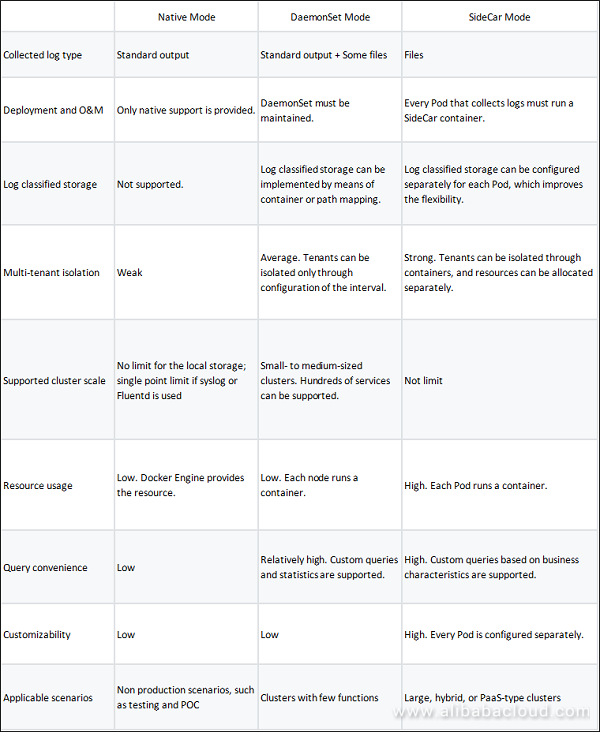
The preceding table indicates that:
Both the DaemonSet and Sidecar modes have their own advantages and disadvantages, but neither is applicable to all scenarios. Alibaba Cloud Log Service supports both the DaemonSet and SideCar modes and is improved to better adapt to the Kubernetes dynamic scenarios.
Both modes are implemented based on Logtail. Today, millions of log service clients (Logtails) have been deployed. They are now collecting PB-scale data generated by tens of thousands of applications and have been tested on years of Double 11 and Double 12 shopping festivals.
In DaemonSet mode, Logtail makes a lot of adaptation efforts, including:
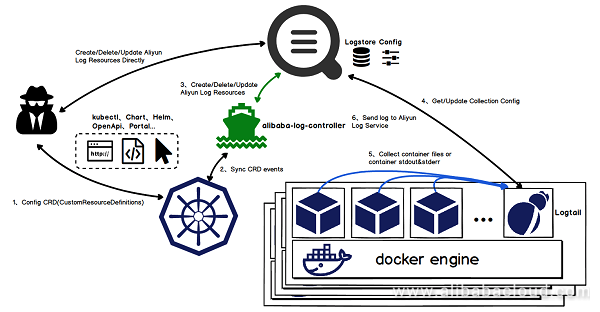
Configuration and use of the SideCar mode are similar to collection of data on the VMs or PMs. From the Logtail container point of view, Logtail works on a VM and needs to collect a certain log file or some log files on this VM.
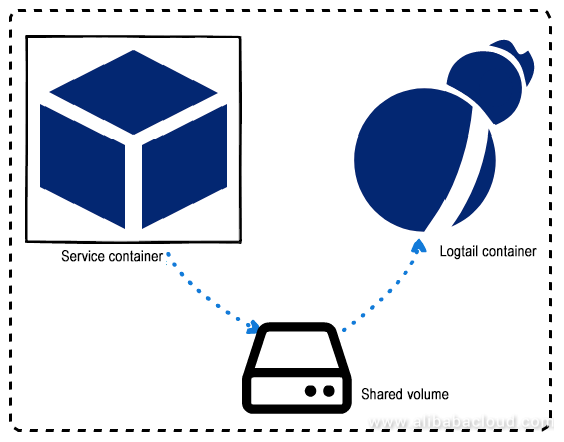
However, the following problems must be solved in the container scenario:
Currently, the Logtail container allows you to configure related parameters using environmental variables and supports definition of a machine group using a user defined ID. This properly solves the preceding two problems.
In SideCar mode, you can install and configure the log components as follows:
ALIYUN_LOGTAIL_USER_ID, ALIYUN_LOGTAIL_CONFIG, and ALIYUN_LOGTAIL_USER_DEFINED_ID. For more information about the meanings and values of parameters, see Standard Docker log collection.Tips:
apiVersion: batch/v1
kind: Job
metadata:
name: nginx-log-sidecar-demo
namespace: kube-system
spec:
template:
metadata:
name: nginx-log-sidecar-demo
spec:
# Configuration of volumes
volumes:
- name: nginx-log
emptyDir: {}
containers:
# Configuration of the primary container
- name: nginx-log-demo
image: registry.cn-hangzhou.aliyuncs.com/log-service/docker-log-test:latest
command: ["/bin/mock_log"]
args: ["--log-type=nginx", "--stdout=false", "--stderr=true", "--path=/var/log/nginx/access.log", "--total-count=1000000000", "--logs-per-sec=100"]
volumeMounts:
- name: nginx-log
mountPath: /var/log/ngin
# Configuration of the Logtail SideCar container
- name: logtail
image: registry.cn-hangzhou.aliyuncs.com/log-service/logtail:latest
env:
# aliuid
- name: "ALIYUN_LOGTAIL_USER_ID"
value: "165421******3050"
# Configuration of the machine group using a user-defined ID
- name: "ALIYUN_LOGTAIL_USER_DEFINED_ID"
value: "nginx-log-sidecar"
# Startup configuration (used to select the region of Logtail)
- name: "ALIYUN_LOGTAIL_CONFIG"
value: "/etc/ilogtail/conf/cn-hangzhou/ilogtail_config.json"
# Sharing volumes with the primary container
volumeMounts:
- name: nginx-log
mountPath: /var/log/nginx
# Health check
livenessProbe:
exec:
command:
- /etc/init.d/ilogtaild
- status
initialDelaySeconds: 30
periodSeconds: 30 As shown in the following figure, create a Logtail machine group on the Log Service console, and select a user-defined ID for the machine group so that Logtail can adapt to changes of the IP address of the Pod. The procedure is as follows:
ALIYUN_LOGTAIL_USER_DEFINED_ID configured in step 1.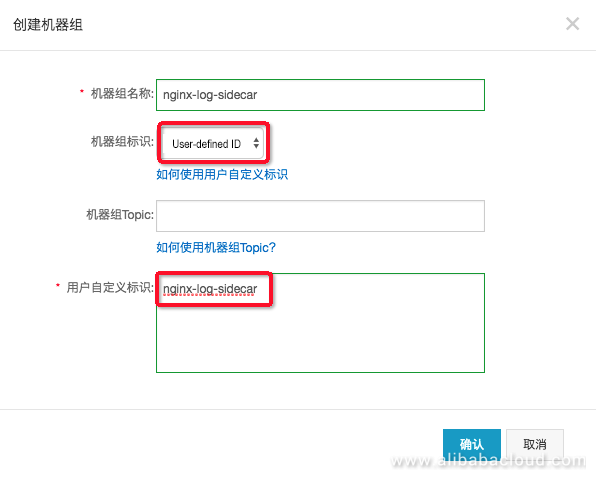
After creating the machine group, complete the collection configuration of the corresponding files. Currently, the following log formats are supported: single-line log, Nginx access log, delimiter log, JSON log, and regular expression log. For more information, see Text log configuration method. In this example, the configuration is as follows:
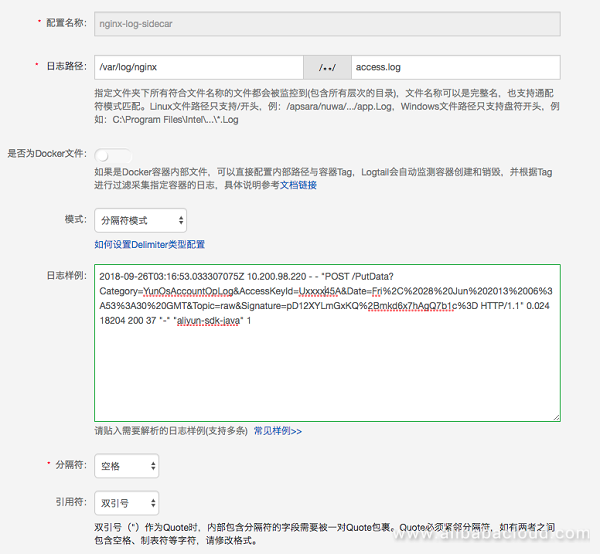
After you complete the log collection configuration and apply it to the machine group, the logs can be collected in one minute. You can go to the query page of Logstore to query the collected logs.
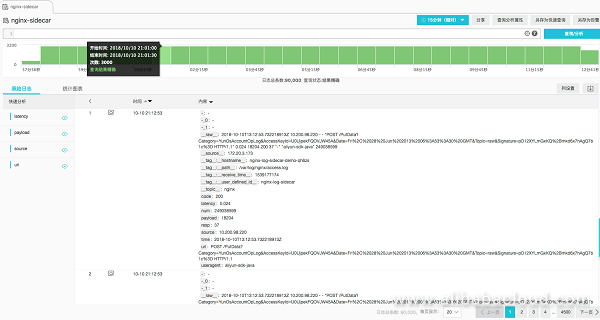
Log Service provides a complete log solution, in which log collection is only the first step. For more information about functions of Log Service, see the following articles:

2,598 posts | 769 followers
FollowAlibaba Container Service - October 13, 2022
Alibaba Developer - June 30, 2020
Alibaba Cloud Community - February 20, 2024
H Ohara - March 13, 2024
Alibaba Container Service - July 16, 2019
Alibaba Developer - April 15, 2021

2,598 posts | 769 followers
Follow Black Friday Cloud Services Sale
Black Friday Cloud Services Sale
Get started on cloud with $1. Start your cloud innovation journey here and now.
Learn More ACK One
ACK One
Provides a control plane to allow users to manage Kubernetes clusters that run based on different infrastructure resources
Learn More Container Registry
Container Registry
A secure image hosting platform providing containerized image lifecycle management
Learn MoreMore Posts by Alibaba Clouder